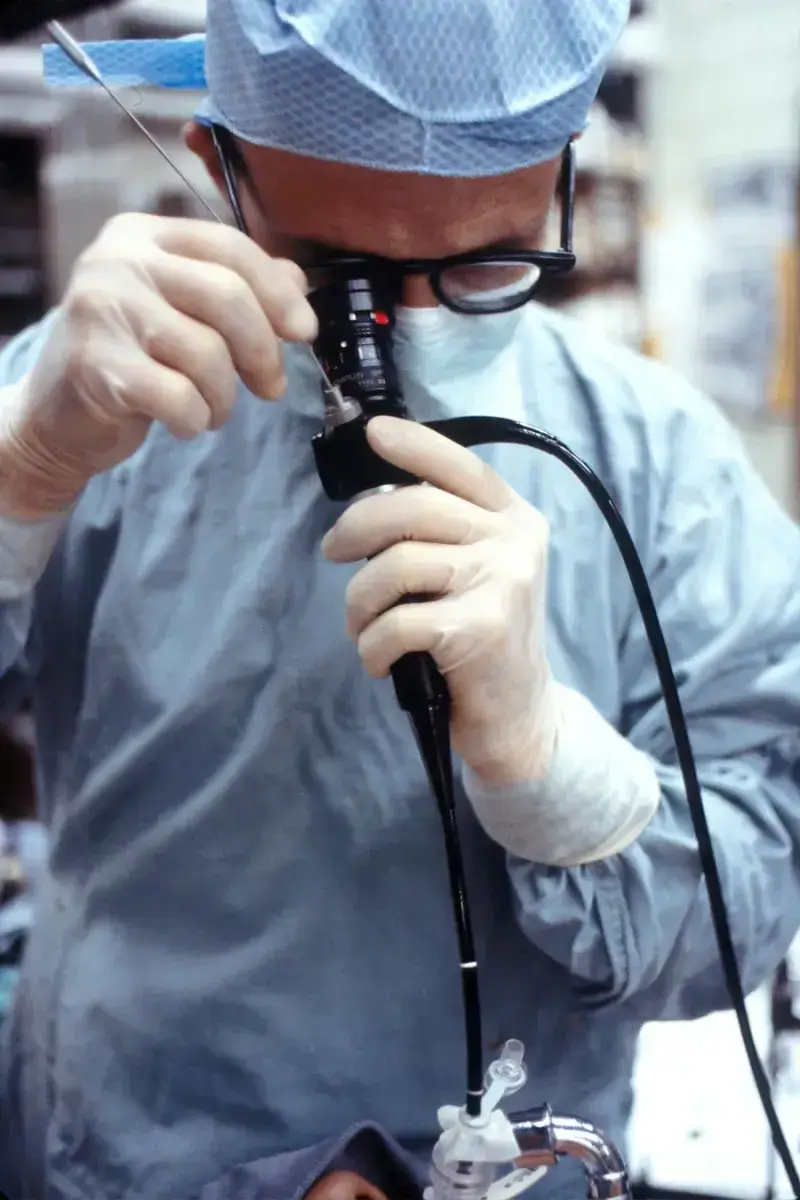Diagnosis & Treatment - Nasal and Paranasal Sinus Cancers
Nasal Cancer Treatment in Ahmedabad
Diagnosis
A biopsy is the first step in the diagnosis of nasal cavity or sinus cancer. During a biopsy, a small amount of the tumor is removed. A pathologist then examines the sample to determine what type of tumor you have.

Special X-rays, such as CT scans, MRIs, or PET/CT scans, may provide more details about how deep the cancer is and if it has spread.
The information from your biopsy and imaging scans allows your doctor to tell you the stage of the cancer. The stage measures how widespread or advanced the cancer is. It guides the recommendations for your treatment.
Treatment of Nasal Cavity and Sinus Cancers
The goals for the treatment of nasal cavity or sinus cancer are to:
- cure the cancer
- preserve your appearance
- preserve normal function
Surgery for Nasal Cavity and Sinus Cancers
For most people with nasal cavity or sinus tumors, surgery will be the mainstay of treatment. We may recommend a traditional open surgery or minimally invasive endoscopic surgeries , as per the stage and location of the disease .
Rhinectomy
Rhinectomy is a procedure in which the nose or part of the nose is removed. This approach is generally used only for people with extremely high-risk cancer.
We offer plastic surgeries to the people who require a rhinectomy. We help you understand and work with you so that you get back to looking and feeling your best.
Maxillectomy
Maxillectomy is a surgery to remove bones in the upper jaw. We may recommend a maxillectomy if the tumor is located on the bones inside the walls of the nose or in the maxillary sinuses. For some people, it may be possible to have a minimally invasive maxillectomy endoscopically. We offer endoscopic minimally invasive surgeries for small tumors of maxillary sinus.
Skull-Base Surgery
In some cases, nasal cavity or sinus tumors may grow along the base of the skull. That’s because the bone that makes up the skull base also forms the top of the nasal cavity and some of the paranasal sinuses.
For these tumors, we sometimes need to perform skull-base surgeries. Skull-base surgeries are very complex and demanding. It requires a surgical team that includes a head and neck surgeon, a neurosurgeon, and sometimes a plastic surgeon.
Craniofacial Resection
Open craniofacial resection surgery involves removing the tumor through incisions in the face and skull. Surgeons operate on the tumor from both above and below. This gives a better chance of removing the entire tumor. This surgery is very complex. The surgical team consists of a head and neck cancer surgeon, a plastic surgeon, and a neurosurgeon.
Lymph Node Removal
Nasal cavity and sinus cancers often spread to the lymph nodes in the neck first. Removing the lymph nodes in the neck (and other nearby tissue) may be done at the same time as the surgery to remove the nasal cavity or sinus cancer.
The extent and depth of the cancer guides your plan of care. Surgery is the most common treatment for nasal cavity and sinus cancers. Often surgery is the only treatment needed for noncancerous tumors and early-stage cancers.
If the disease is more advanced, radiation, chemotherapy, or both may be used to shrink the tumor. This can be done before or after surgery to reduce the risk of the cancer coming back.
Know More
Know More
Know More
Know More
Know More
Specialization
Oral (Mouth) Cancers Tongue Cancers Throat Cancers (Laryngeal and Pharyngeal Cancers) Thyroid Tumors Parathyroid Tumors Nasal and Paranasal Sinus Cancers Anterior and Lateral Skull Base Cancers Salivary Gland TumorsContact Us






